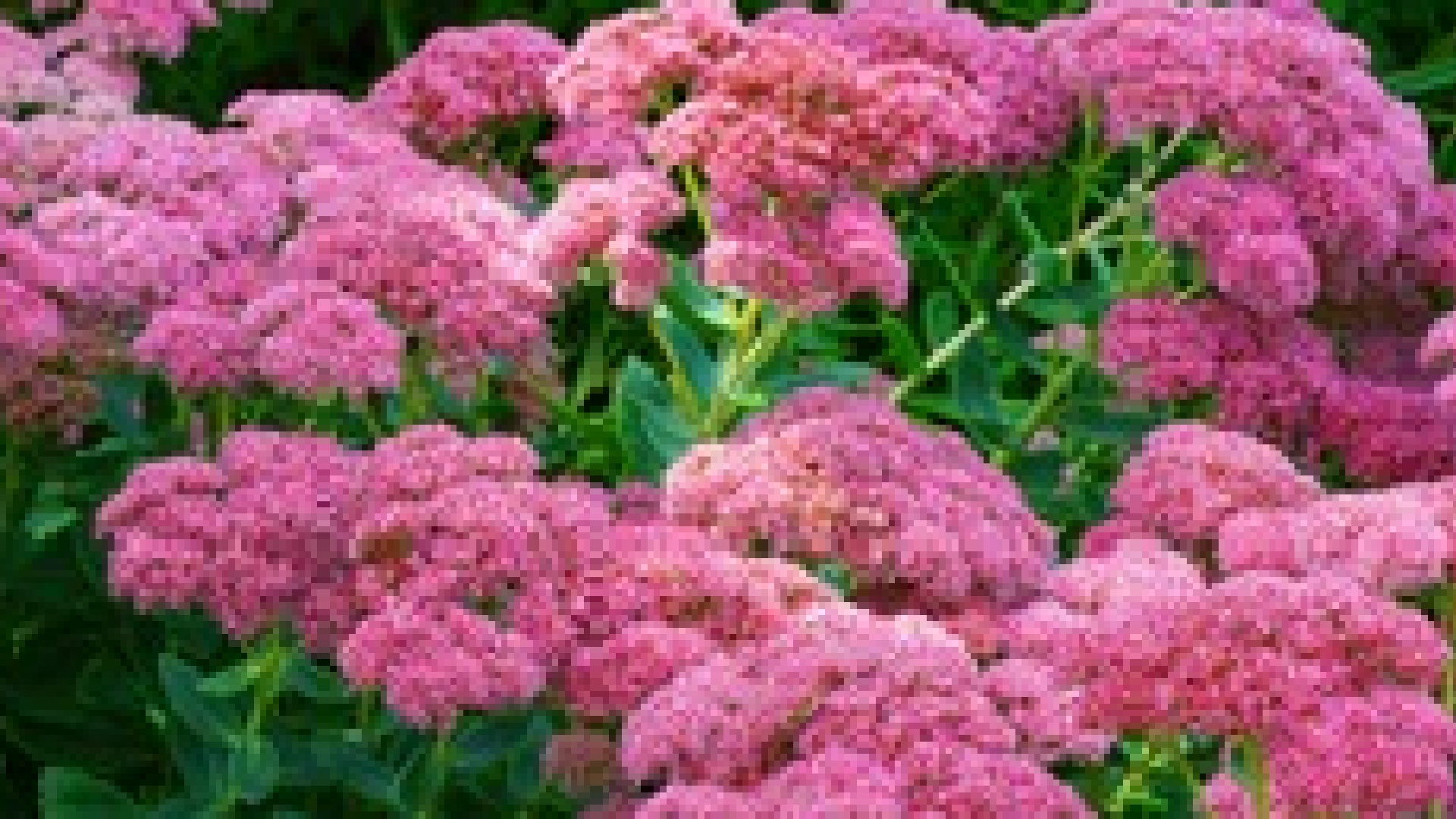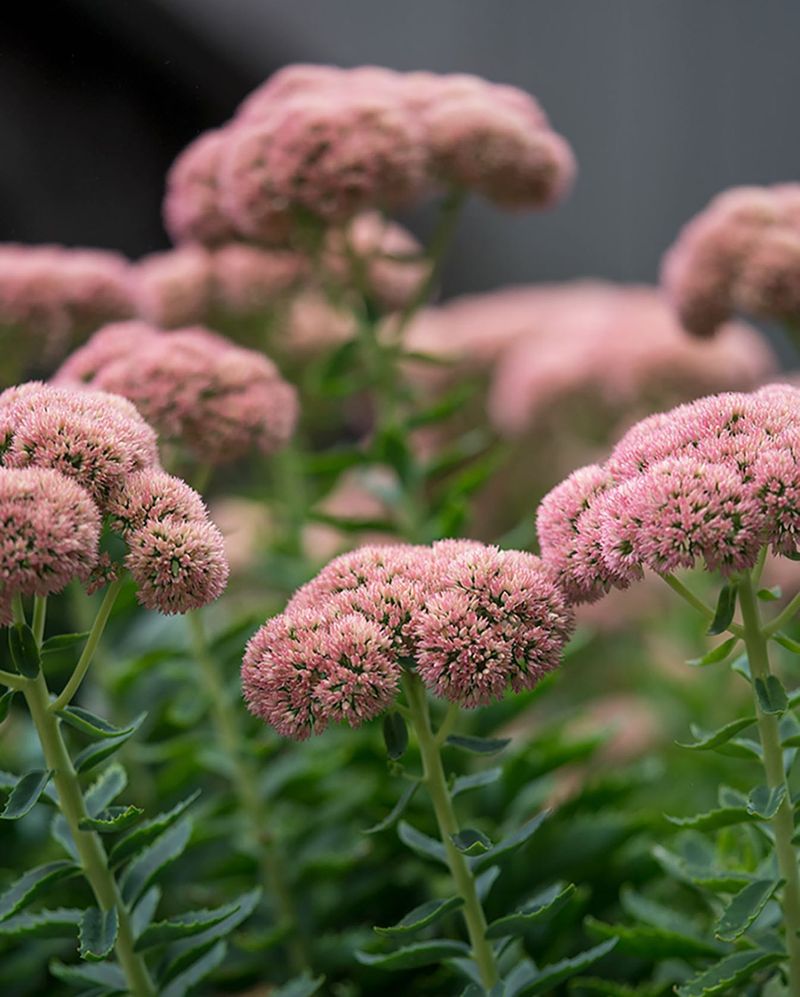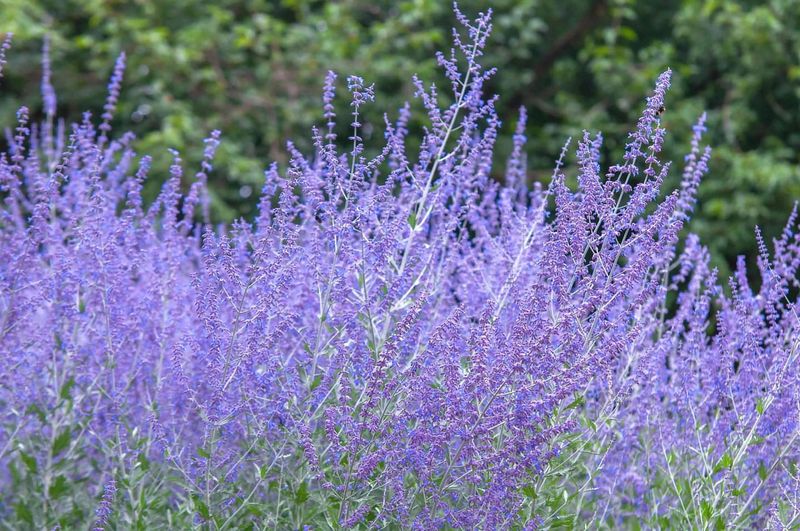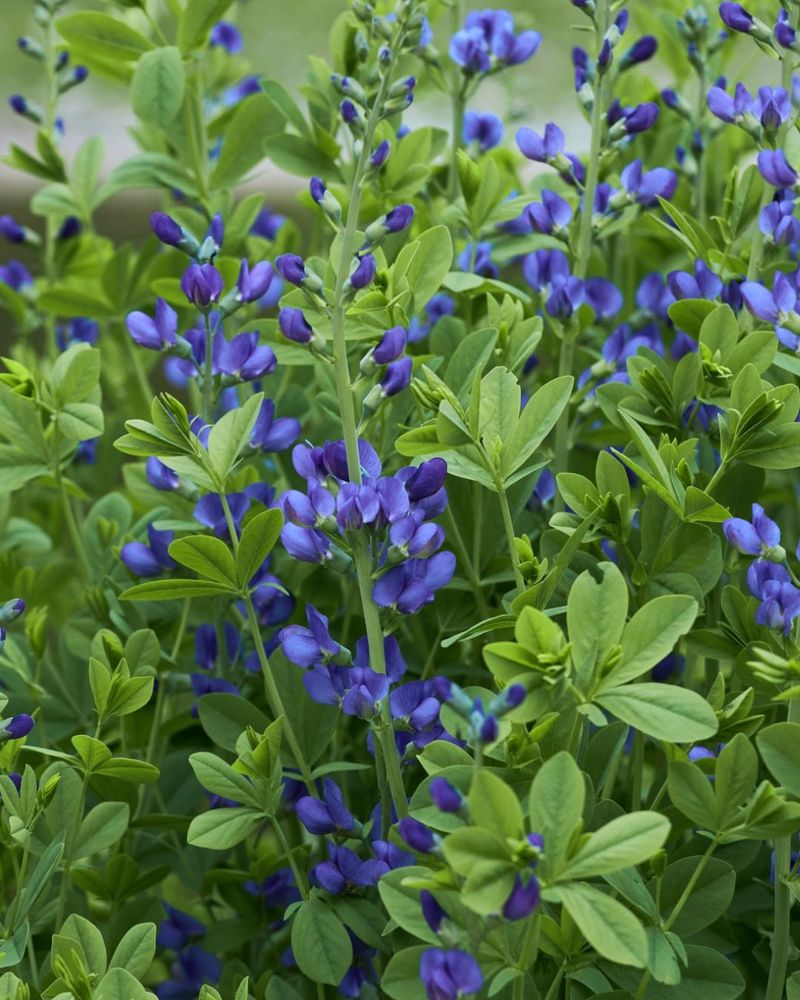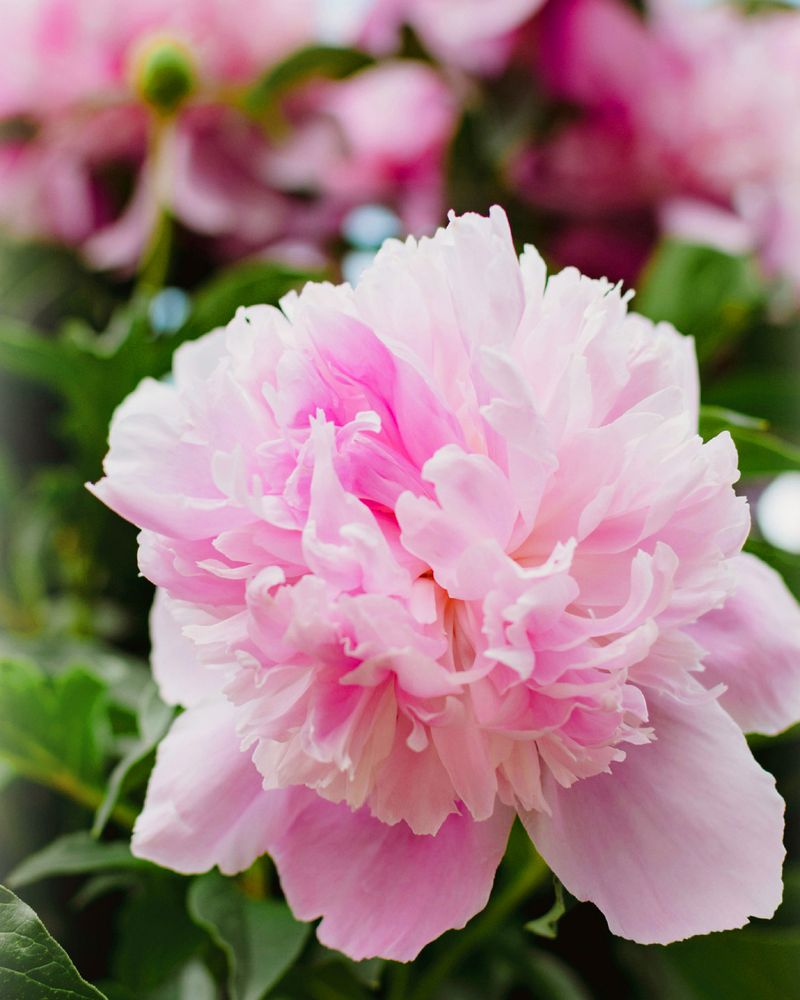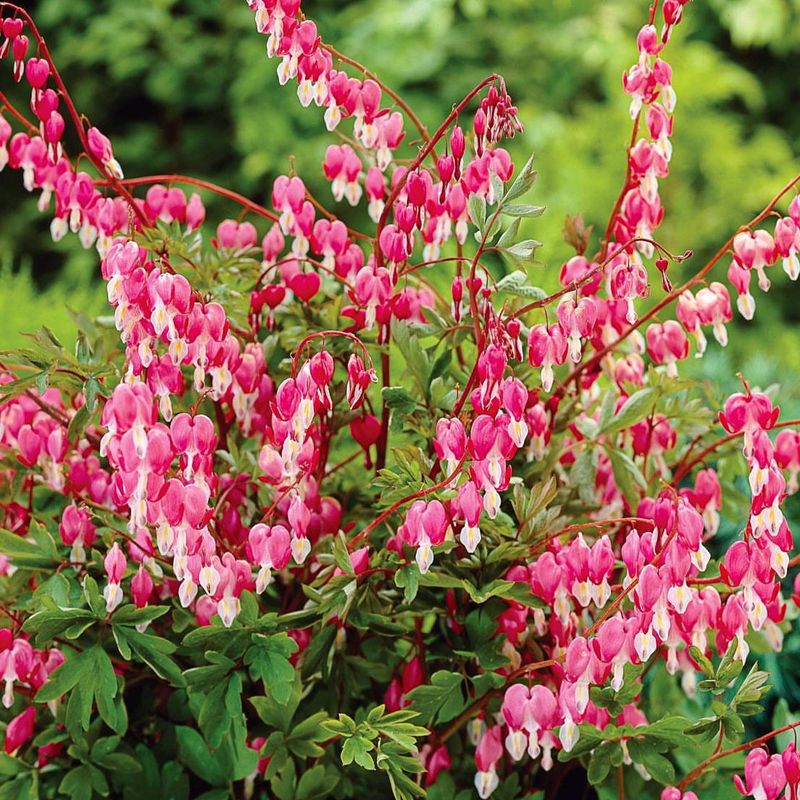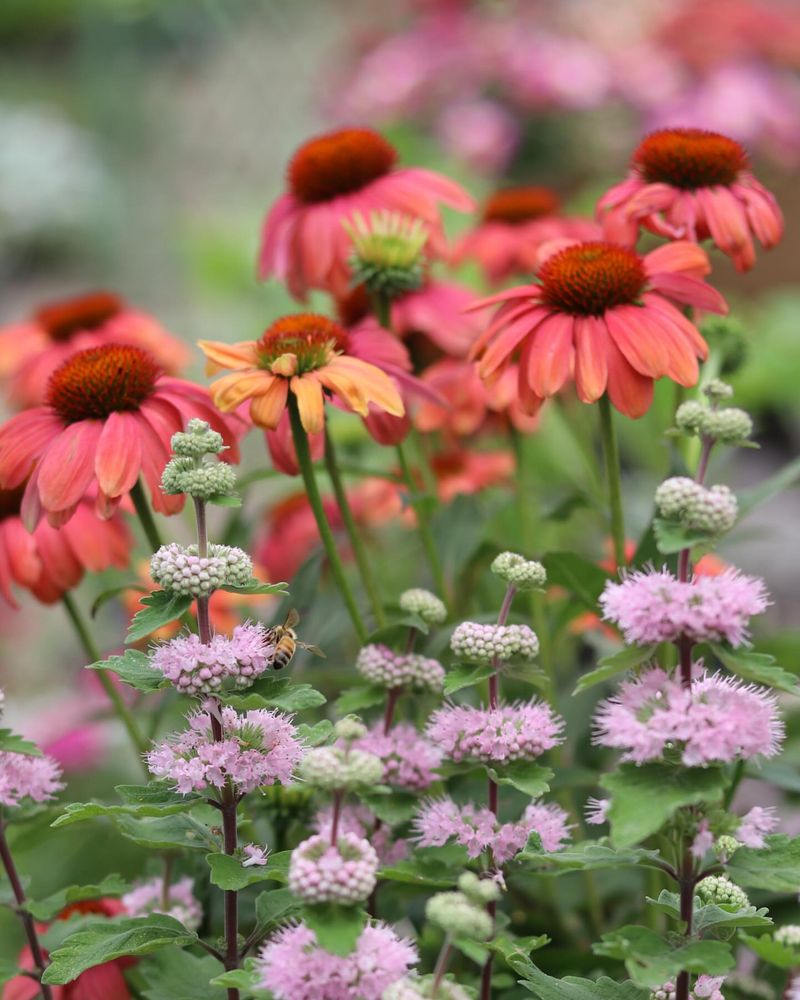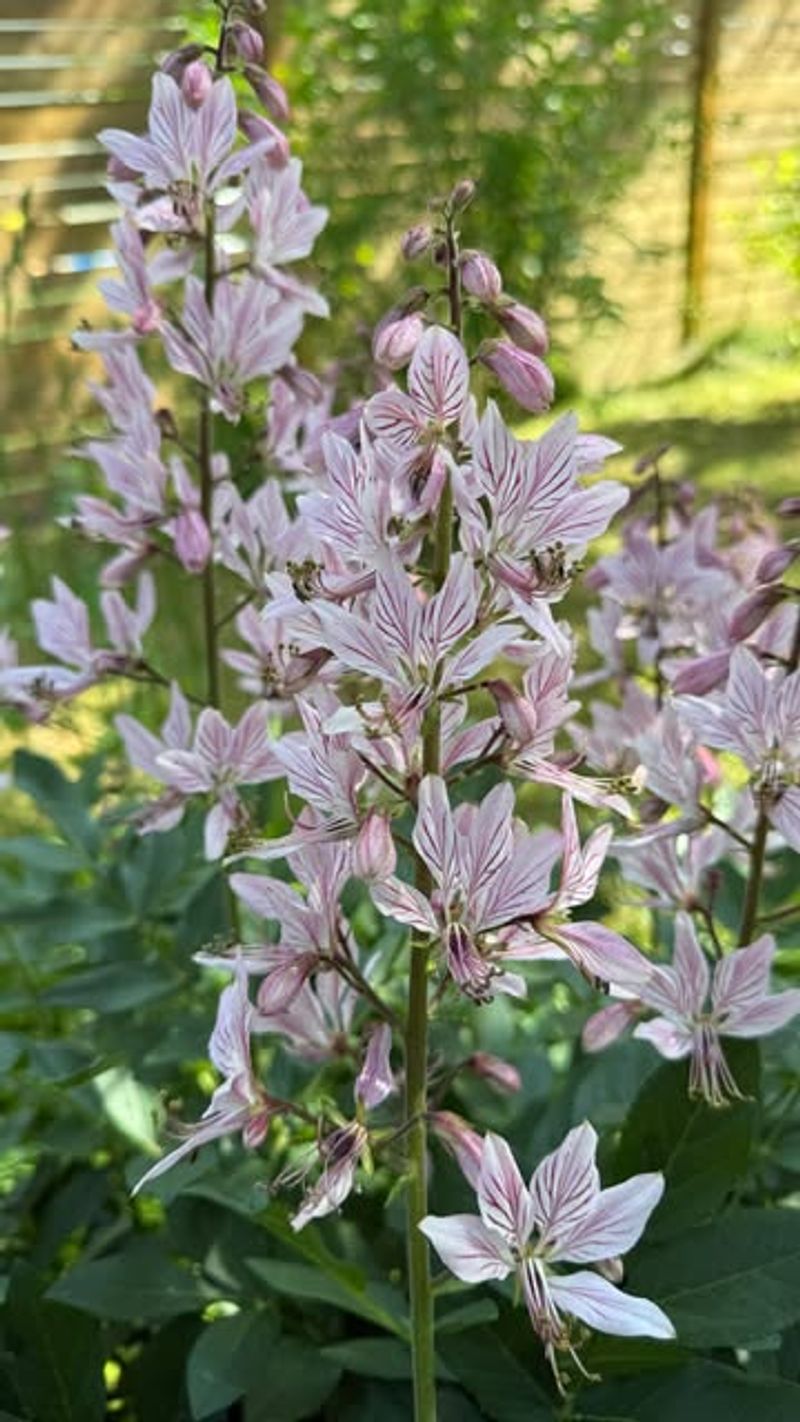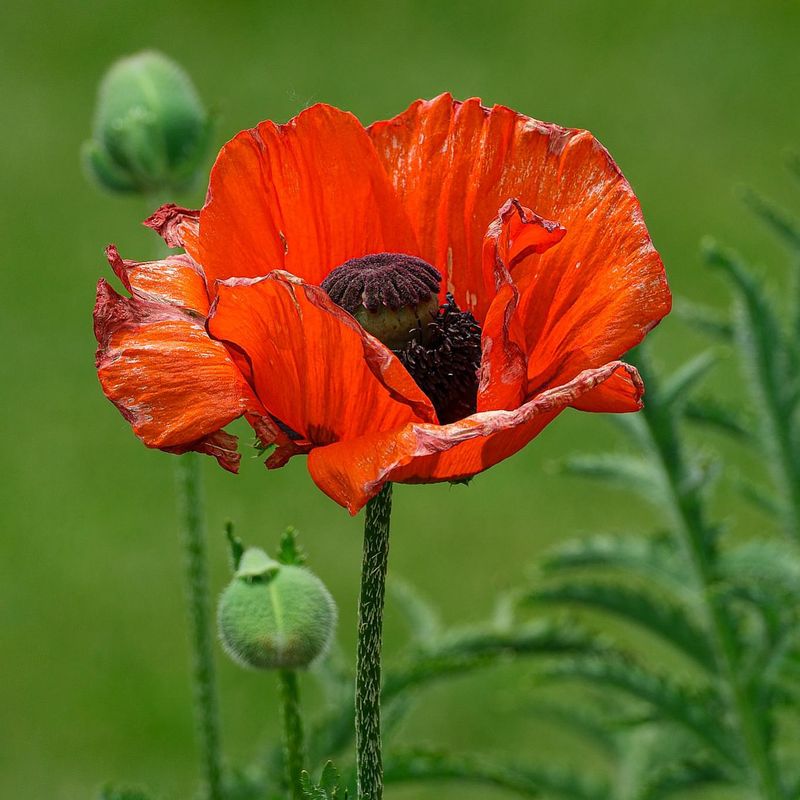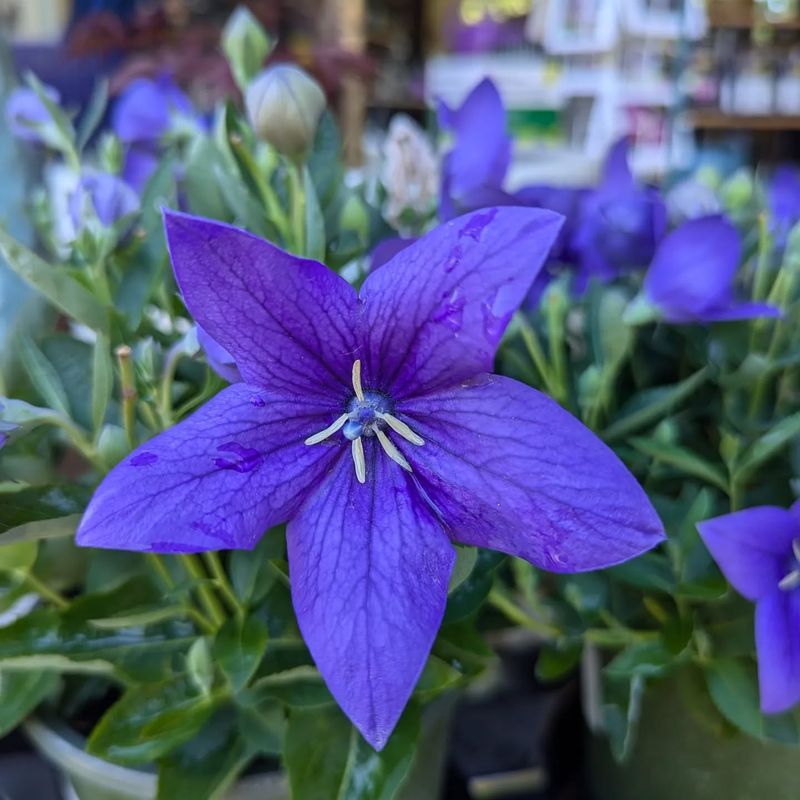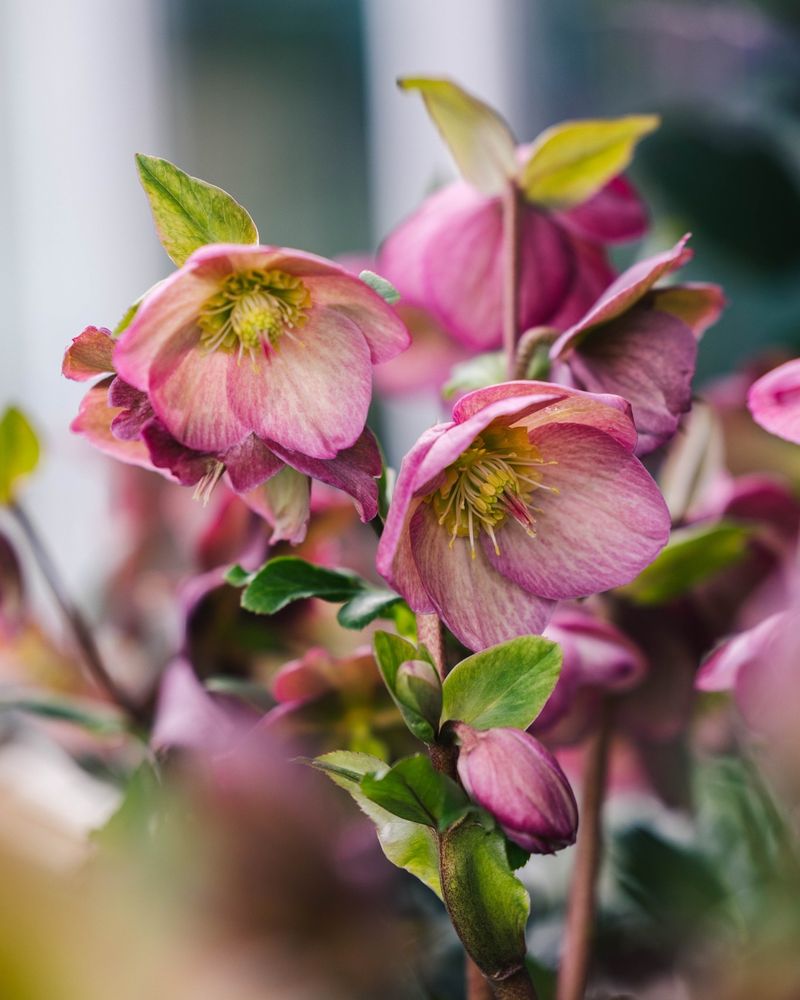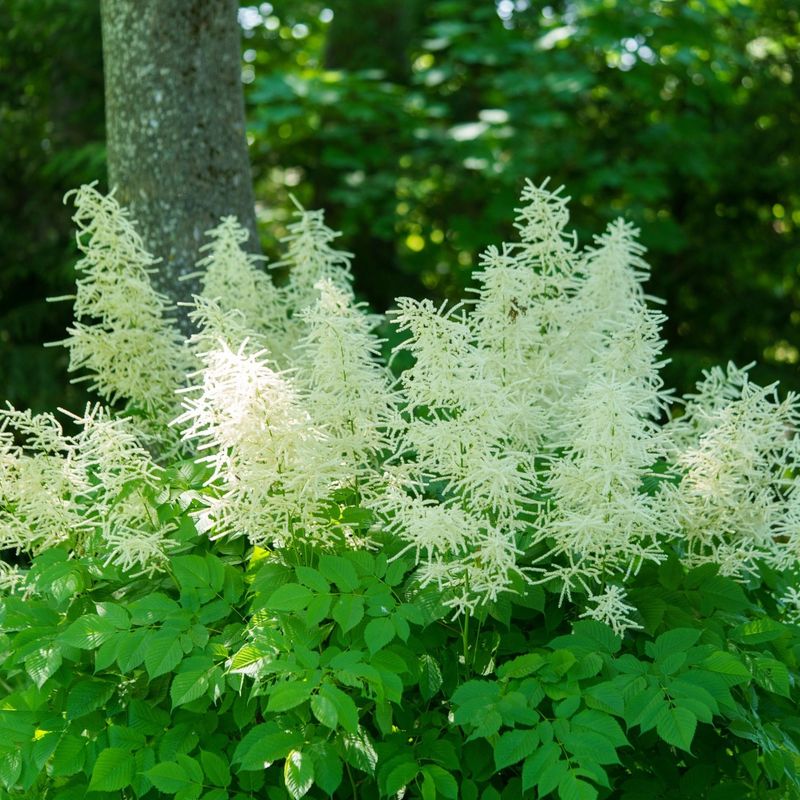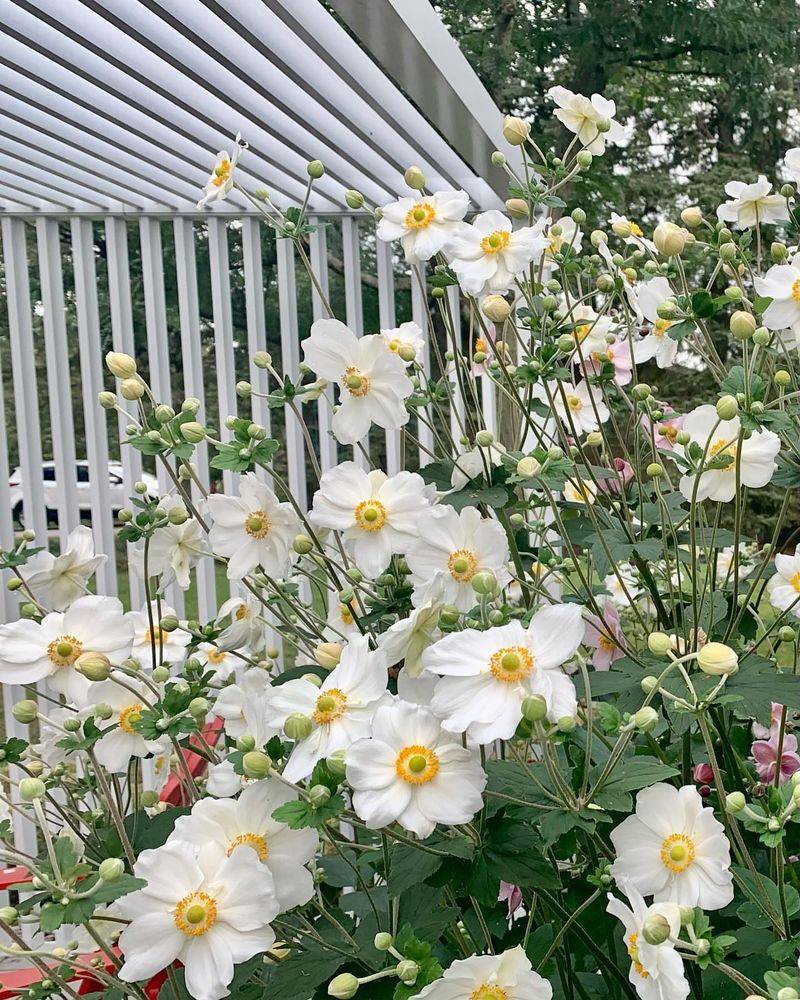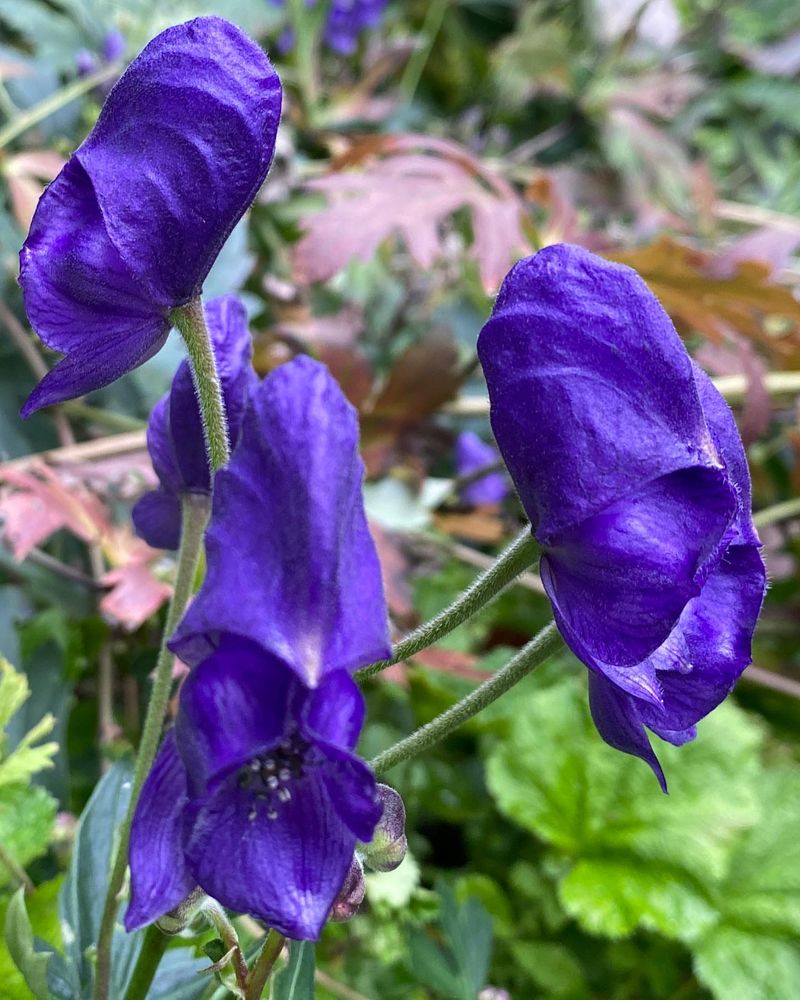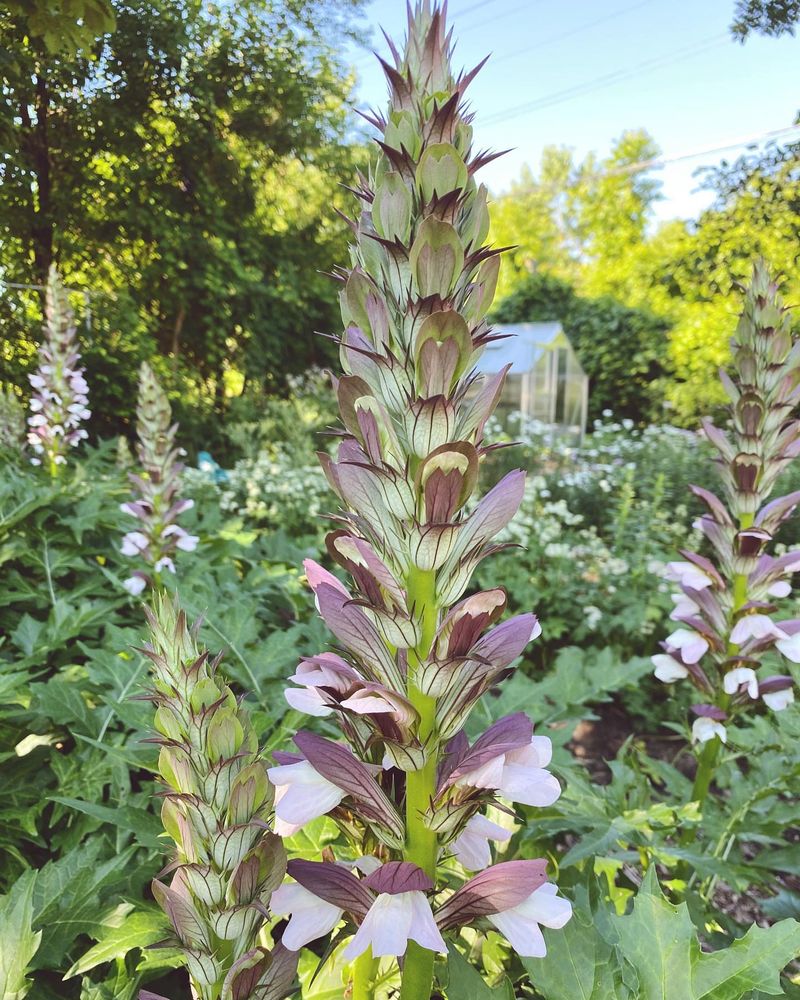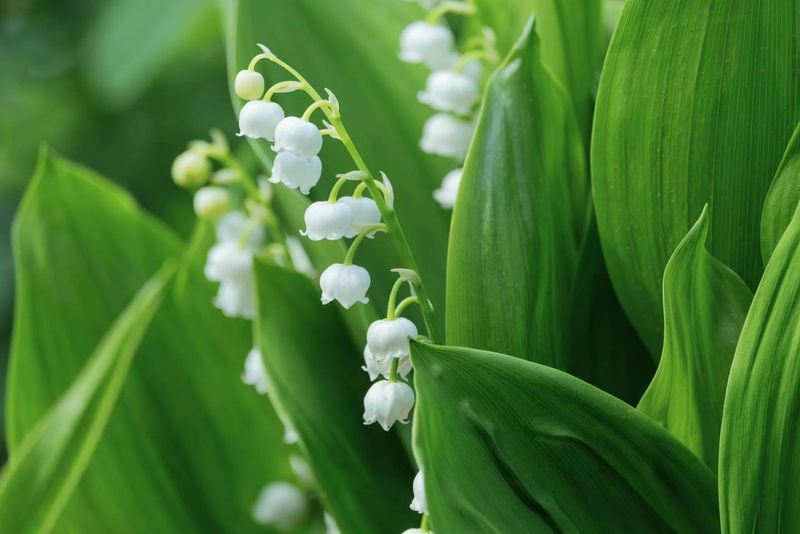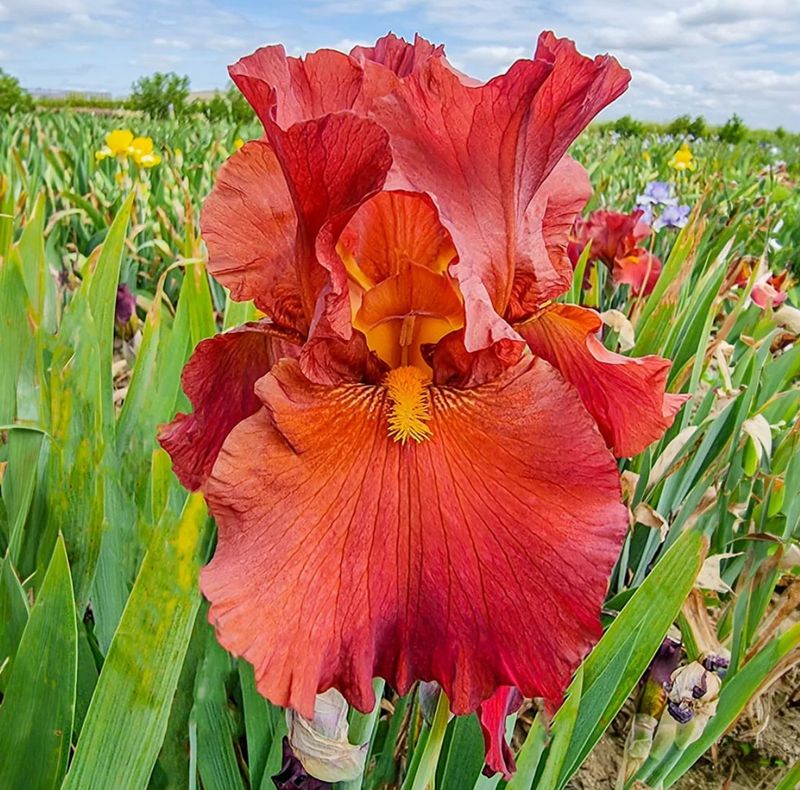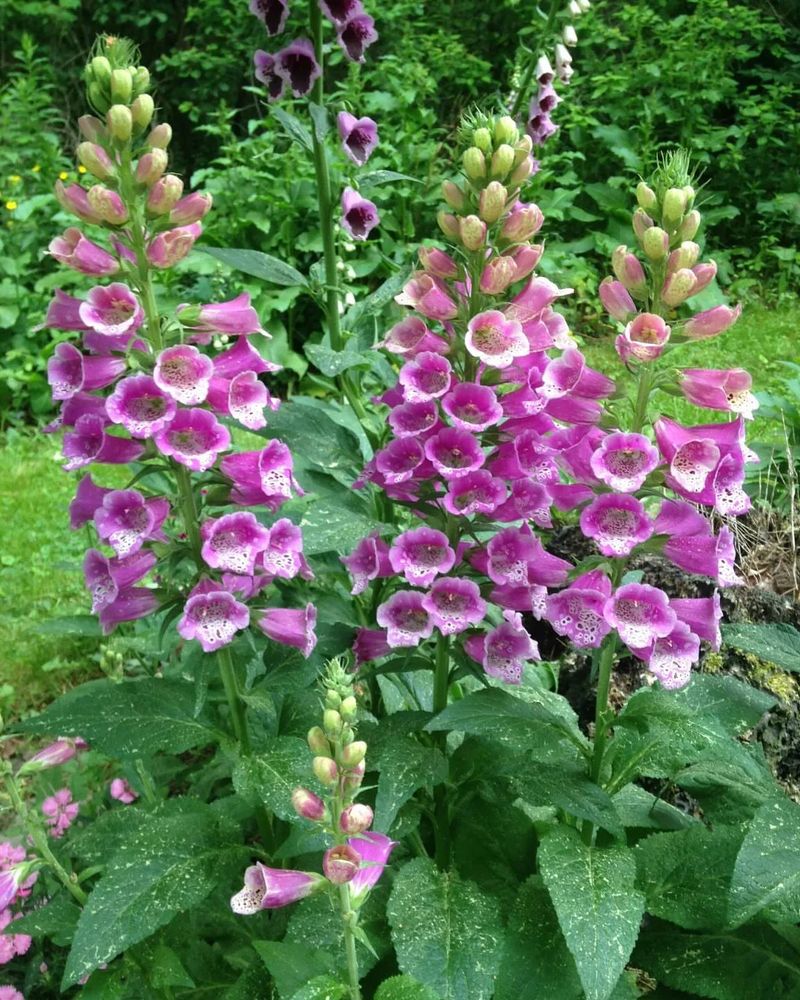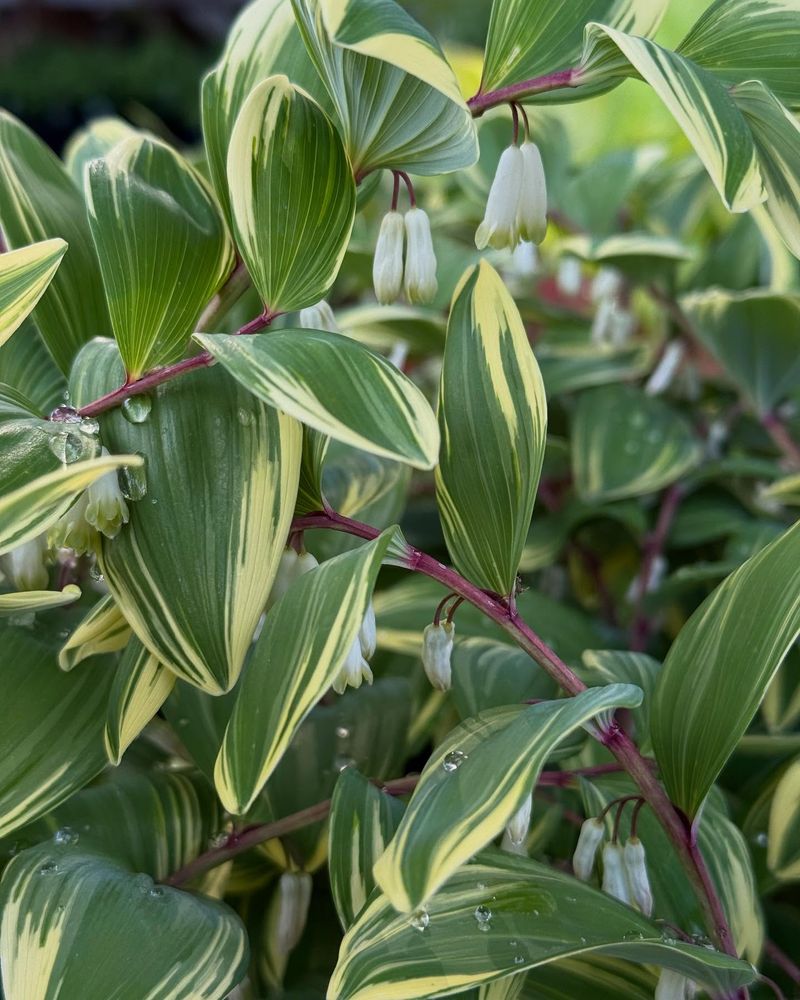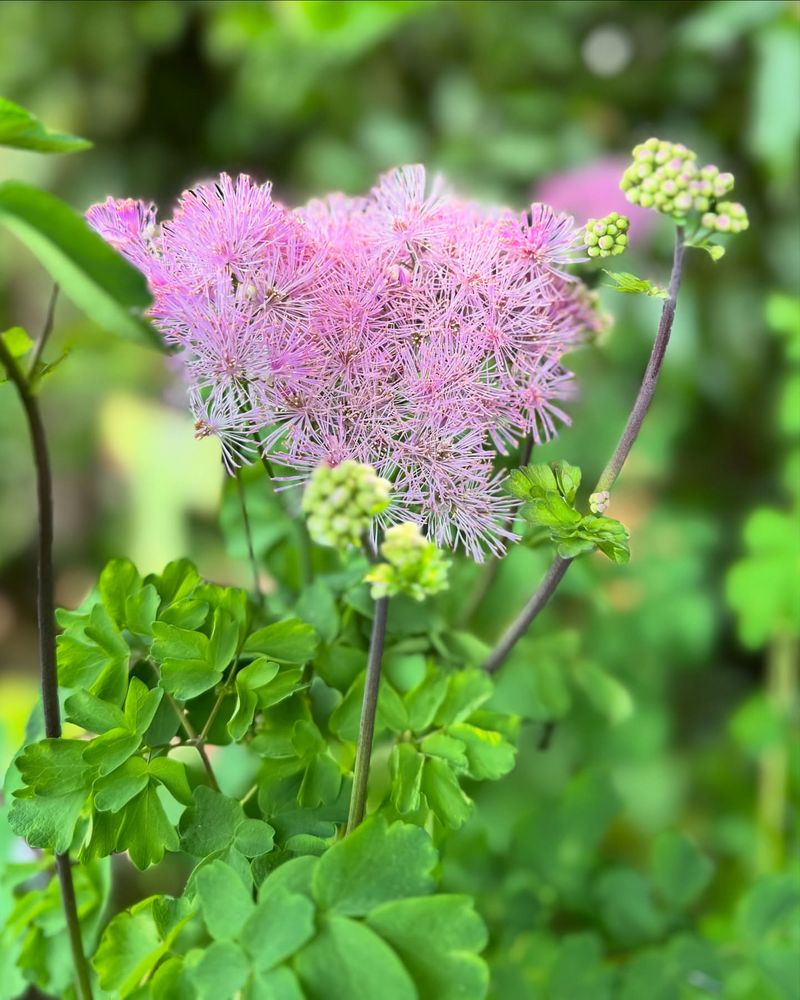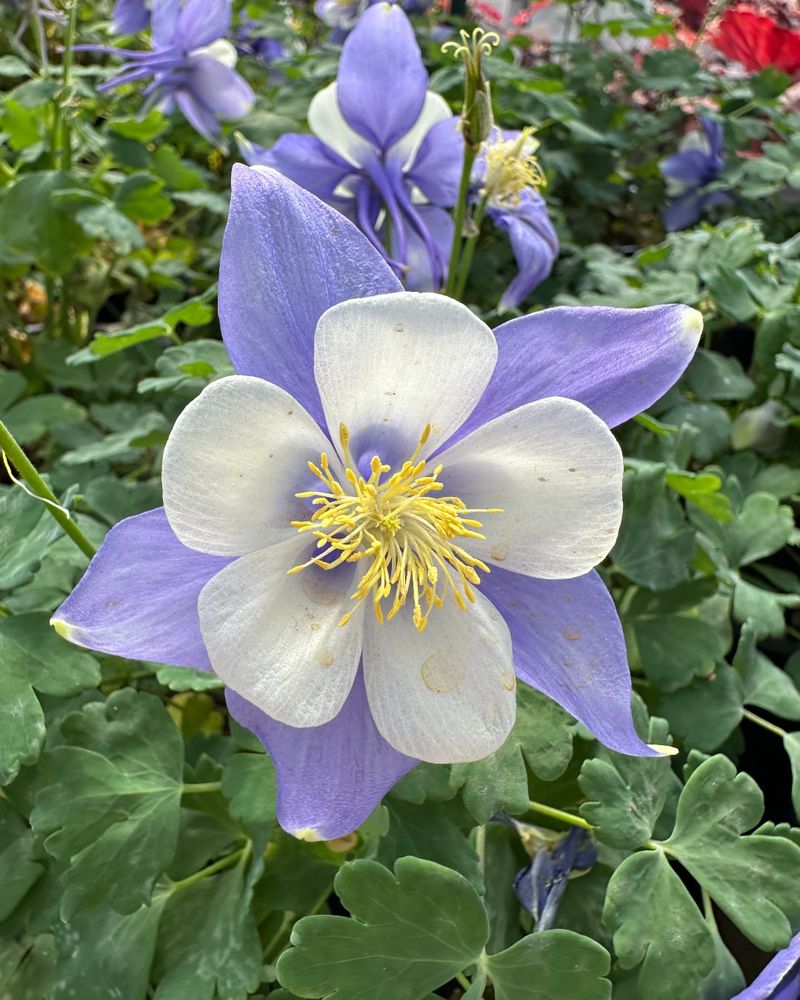Think beautiful gardens require constant weeding, deadheading, and babying? Think again. Some of the best bloomers actually thrive when you take a step back.
These 15 low-maintenance perennials—and a few bonus picks—prefer to be left alone, and they’ll reward you with more color, longer blooms, and zero stress. Less fuss, more flowers? Yes, please.
1. Sedum ‘Autumn Joy’
Nicknamed ‘set it and forget it’ by experienced gardeners, this succulent perennial develops star-shaped flower clusters that transform from pale pink to deep copper. The fleshy leaves store water, making it incredibly drought-tolerant.
Excessive pruning or dividing disrupts its natural growth cycle. Simply plant in well-draining soil with full sun exposure, then step back and admire. Many gardeners report that specimens left undisturbed for years produce the most spectacular fall displays.
2. Russian Sage
Lavender-blue flower spikes dance above silvery foliage on this drought-resistant powerhouse. Russian sage establishes deep roots that help it thrive in challenging conditions where other plants surrender.
Constant fussing, repositioning, or dividing weakens its impressive root system. Plant it in a sunny, well-draining spot and resist the urge to move it. The more established it becomes, the more profuse the blooms will be, creating a cloud-like display from midsummer through fall.
3. Baptisia (False Indigo)
False indigo develops a taproot that plunges deep into the earth, making it remarkably resilient once established. The lupine-like flower spikes in blue, purple, yellow or white appear in late spring, followed by interesting seed pods that rattle in the breeze.
Attempting to divide or transplant mature plants often leads to disappointment. Leave baptisia undisturbed for years and watch it transform into a shrub-like specimen with increasingly abundant blooms. Patience rewards gardeners with a carefree, long-lived perennial that shrugs off drought and poor soil.
4. Peony
Garden royalty with fragrant, lush blooms, peonies can live for generations when left in peace. These long-lived perennials resent disturbance and often take several years to recover from division or transplanting.
Many family gardens feature peonies that have bloomed faithfully for decades without intervention. Plant them at the correct depth (eyes just 1-2 inches below soil level), provide support for heavy blooms, and resist the urge to relocate. With minimal care beyond occasional feeding, peonies reward patience with increasingly abundant flowering each spring.
5. Bleeding Heart
Heart-shaped blooms dangle from arching stems in spring, creating a romantic woodland display. Old-fashioned bleeding hearts establish extensive root systems that support more prolific flowering when undisturbed.
Frequent division disrupts their natural growth cycle. Plant in humus-rich soil with morning sun and afternoon shade, then leave them be. The plants may disappear in summer heat but return reliably each spring with increasing vigor. Gardeners who resist the urge to dig and divide are rewarded with spectacular spring displays year after year.
6. Echinacea (Coneflower)
Prairie-tough coneflowers feature daisy-like blooms with distinctive central cones that attract butterflies and birds. Native to North American grasslands, they’ve evolved to withstand challenging conditions without human intervention.
While newer hybrids might be shorter-lived, traditional purple coneflowers develop extensive root systems when left undisturbed. Resist the urge to divide clumps frequently. Simply deadhead spent blooms to encourage more flowers, and allow some seedheads to remain for winter interest and bird food. Undisturbed plants bloom longer and self-seed gently.
7. Gas Plant (Dictamnus)
Named for the flammable oils its flowers emit on hot summer evenings, this uncommon perennial develops an impressive root system that resents disturbance. Star-shaped white or pink flowers appear on tall stems above lemon-scented foliage.
Gas plants can live for generations in the same spot, gradually increasing in size and bloom quantity. They strongly resist transplanting and division, often dying when moved. Patient gardeners who plant them in well-draining soil with full sun and then practice hands-off gardening are rewarded with decades of carefree flowering.
8. Oriental Poppy
Tissue-paper blooms in vibrant oranges, reds, or pinks create unforgettable early summer displays. Oriental poppies develop long taproots that help them survive drought but make them resentful of disturbance.
Moving established plants often results in their demise. Plant them where they can remain permanently, in well-draining soil with full sun. The foliage disappears after flowering (perfect for planting late-emerging companions nearby). Undisturbed clumps produce increasingly dramatic flower displays each year, with some garden specimens blooming faithfully for decades.
9. Balloon Flower (Platycodon)
Balloon-like buds that pop open into star-shaped flowers give this Asian native its common name. The deep roots that make it drought-tolerant also make it resentful of disturbance.
Balloon flowers emerge late in spring, so mark their location to avoid accidental damage. Once established, resist the urge to divide clumps, as they rarely transplant successfully. Patient gardeners who leave them undisturbed are rewarded with increasingly robust plants that produce more numerous blooms each summer, creating a reliable display of blue, pink or white stars.
10. Hellebore (Lenten Rose)
Winter-blooming hellebores bring color to the garden when little else dares to flower. Their leathery, evergreen foliage and nodding blooms in shades from white to deep purple persist for months, often from late winter through spring.
Extensive root systems make mature specimens drought-tolerant but difficult to move successfully. Plant them in humus-rich soil with partial shade and leave them undisturbed. The reward for this hands-off approach? Increasingly abundant flowering each year, with mature clumps producing dozens of blooms that last for months.
11. Goat’s Beard (Aruncus)
Resembling an oversized astilbe, this woodland native produces feathery plumes of cream-colored flowers above fernlike foliage. Goat’s beard establishes extensive root systems that support increasingly dramatic flowering displays when undisturbed.
Perfect for damp, partially shaded locations, these impressive perennials can reach 4-6 feet in height and width at maturity. Division or transplanting often results in years of recovery time. Gardeners who provide rich, moist soil and then practice patience are rewarded with magnificent specimens that create a focal point in woodland gardens.
12. Japanese Anemone
Elegant flowers on wiry stems dance above mounds of maple-like foliage in late summer when many perennials have finished blooming. Japanese anemones establish slowly but surely, gradually forming impressive colonies when left undisturbed.
Frequent division interrupts their natural development. Plant them in rich, moist soil with morning sun and afternoon shade, then practice patience. The reward? After several years of establishment, these graceful perennials produce increasingly abundant displays of pink or white blooms that extend the garden season well into fall.
13. Monkshood (Aconitum)
Hooded flowers in jewel-toned blues and purples appear on tall stems in late summer when many gardens lack color. Monkshood develops tuberous roots that resent disturbance but help it survive in challenging conditions.
Perfect for partially shaded locations, these long-lived perennials gradually form impressive clumps when left alone. Avoid frequent division or transplanting, which often leads to plant loss. With minimal intervention beyond occasional feeding, monkshood rewards gardeners with increasingly dramatic late-season displays that attract bumblebees and add vertical interest.
14. Bear’s Breeches (Acanthus)
Architectural and bold, acanthus features glossy, deeply-cut foliage and tall flower spikes that inspired ancient Greek column designs. The extensive, brittle root system resents disturbance and makes division challenging.
Plant bear’s breeches in well-draining soil with sun or partial shade, then leave it be. Attempting to move established plants often results in failure, as broken root fragments can regenerate in unwanted locations. Patient gardeners are rewarded with increasingly impressive specimens that create dramatic focal points and produce more abundant flowering spikes each year.
15. Lily-of-the-Valley
Sweetly fragrant bell-shaped flowers appear above glossy green leaves in spring, creating carpets of bloom in shady locations. Lily-of-the-valley spreads via underground rhizomes, forming increasingly dense flowering mats when left undisturbed.
Frequent digging disrupts their natural spreading pattern. Plant them in rich, moist soil in a shaded location where they can spread freely. Though they may take a season or two to establish, patient gardeners are rewarded with increasingly prolific flowering as the colony matures, creating a fragrant groundcover that returns reliably each spring.
16. Bearded Iris
Ruffled blooms in every color of the rainbow appear above sword-like foliage in late spring. Bearded irises grow from rhizomes that gradually form extensive clumps, producing more flower stalks each year when left undisturbed.
While they benefit from division every 3-5 years when flowering diminishes, frequent disturbance interrupts their blooming cycle. Plant rhizomes just at the soil surface in full sun with excellent drainage. The first year after planting or division typically produces few blooms, but patience brings increasingly spectacular flowering displays in subsequent seasons.
17. Foxglove (Digitalis)
Bell-shaped flowers arranged on tall spires create vertical drama in partially shaded gardens. Though often grown as biennials, perennial foxglove species establish deep root systems that support increasingly impressive flowering when left undisturbed.
Allow foxgloves to self-seed naturally rather than transplanting, as they resent root disturbance. The offspring will position themselves where growing conditions are ideal. Patient gardeners who resist the urge to relocate volunteer seedlings are rewarded with a self-sustaining colony that produces more numerous and taller flower spikes each year.
18. Solomon’s Seal
Arching stems adorned with dangling bell-shaped flowers create elegant, understated beauty in shade gardens. Solomon’s seal spreads gradually via underground rhizomes, forming increasingly impressive colonies when left undisturbed.
Frequent division disrupts their natural growth pattern. Plant them in rich, moist soil in a shaded location and practice patience. The reward? After several years of establishment, these woodland natives create sweeping drifts of bloom each spring. The variegated varieties add season-long interest with their cream-edged foliage.
19. Meadow Rue (Thalictrum)
Clouds of tiny flowers hover above delicate, maidenhair fern-like foliage on tall stems, creating an ethereal effect in partial shade. Meadow rue develops extensive root systems that support increasingly spectacular flowering when left undisturbed.
Taller varieties may reach 6 feet in height at maturity, creating a dramatic backdrop for other perennials. Plant in rich, moist soil and resist the urge to divide frequently. Patient gardeners are rewarded with increasingly robust plants that produce more numerous flowering stems each year, creating a gauzy effect that brings lightness to shaded borders.
20. Columbine (Aquilegia)
Spurred, nodding flowers in jewel tones dance above lacy blue-green foliage in spring. Native columbines have evolved to thrive with minimal intervention, gradually forming impressive clumps that produce more abundant blooming when left undisturbed.
Allow spent flowers to form seedheads rather than deadheading all of them. Columbines will self-sow gently, creating a sustainable colony that perpetuates itself. The volunteer seedlings often show charming color variations. Patient gardeners who resist the urge to relocate every volunteer seedling are rewarded with a self-sustaining display that returns reliably each spring.

